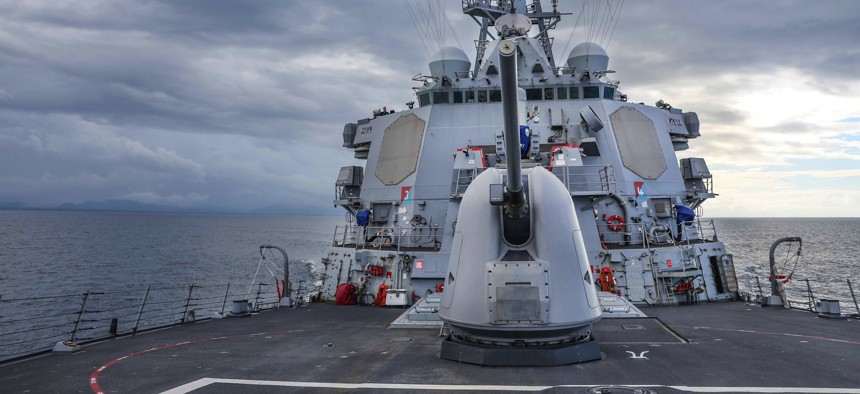
U.S. Navy
Navy to keep four aging destroyers beyond their service lives
Extensions will add four to five years of service apiece—and keep ships in the fleet.
There is life after 35 years of service, at least for four Arleigh Burke-class destroyers newly slated for overhauls that will extend their service lives and keep hulls in the fleet.
“These service life extensions demonstrate the Navy’s commitment to ensuring the surface fleet has the right capability and capacity,” Rear Adm. Fred Pyle, the director of the Surface Warfare Division, said in a Navy press release Thursday. “These extensions align to Secretary of the Navy [Carlos] Del Toro’s commitment to Congress during the FY-24 posture hearings to analyze service life on a hull-by-hull basis and extend the correct ships in order to be good stewards of resources invested in the U.S. Navy by the American people.”
Five-year extensions for the USS Ramage and Benfold will allow them to operate to 2035 and 2036, respectively. The USS Mitscher and Milius will get four-year extensions, keeping them in service until 2034 and 2035, respectively. The latter two have shorter extensions because they would need a year-long overhaul if they went another year, Pyle said in the statement.
This change also comes on the heels of major multi-year procurement contracts announced this week for nine destroyers that should be delivered to the fleet by 2034.
These four ships could continue to serve because their crews kept them in good condition and “because each ship properly adhered to lifecycle maintenance plans,” the statement said.
The ships have all had “Aegis baseline nine upgrades through the DDG Modernization program,” the statement said. “The program provided a comprehensive mid-life modernization to these destroyers, ensuring they have the right systems to remain capable and reliable to the end of their service life.”
The Navy decided in 2018 to extend all DDGs to 45 years of service life, “but it appears that was never officially done and instead the Navy is making the determination to go to 45 years on a case-by-case basis,” said Bryan Clark, a senior fellow at the Hudson Institute.
“This is probably prudent. 45 years is a long service life for ships that are operated as intensely as DDG-51s and some DDG-51s are probably not in good enough condition to reach 45 years without significant investment,” Clark said in an email.
The extensions would bring each of the four ships to about 40 years old.
Other destroyers will likely follow. In their statement, Navy officials said the “surface community will continue to evaluate the service life of each surface ship based on combat relevance, reliability data, and material condition.”
The extensions help keep more ships in the fleet, which is projected to shrink in the late 2030s unless the Navy receives major increases in funding to buy and maintain ships. Though the Navy has a stated goal of at least 355 ships, it currently has 299. And just one of the three options presented in its most recent 30-year shipbuilding plan gives the Navy more than 355 ships, starting in 2042, and it requires the most money.
Clark said this extension may signal that destroyers are going to be kept in service longer as the military prepares for more competition in the not too distant future.
“Notably, this extension will mean potentially all DDG-51s will serve until the 2030s, and many military leaders expect a conflict with China to occur (if it happens) during late 2020s or early 2030s. After that, China may have internal challenges that would make it less able to start a major war with the US and its allies,” he said.
